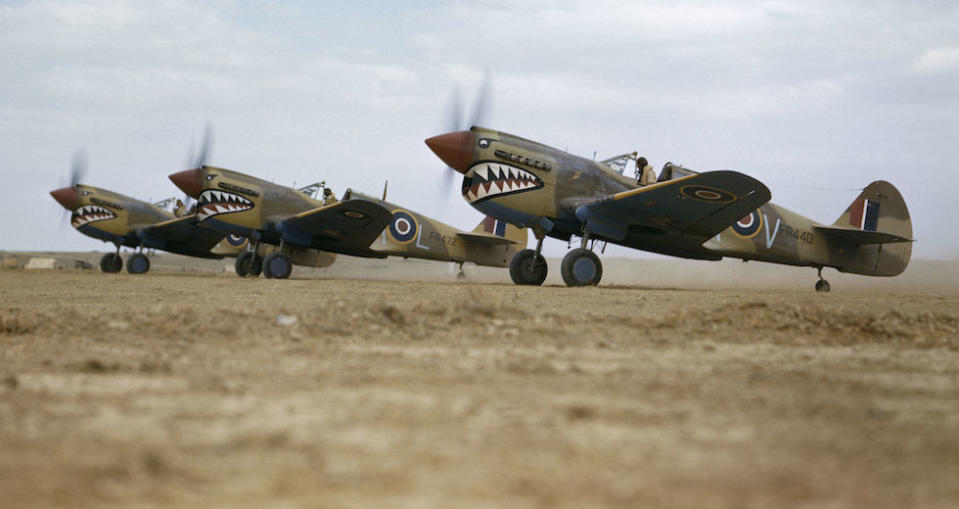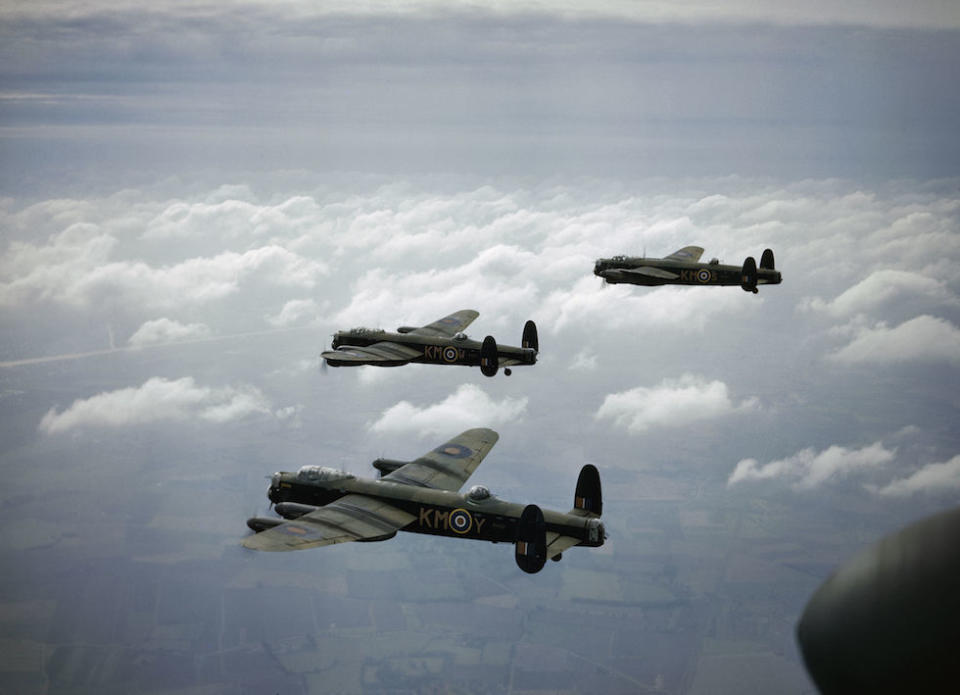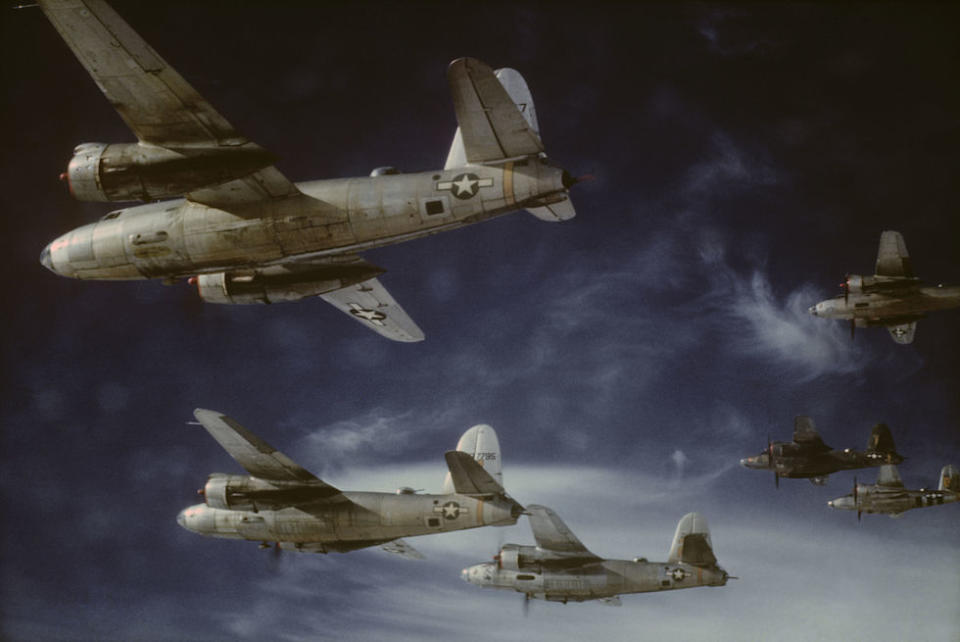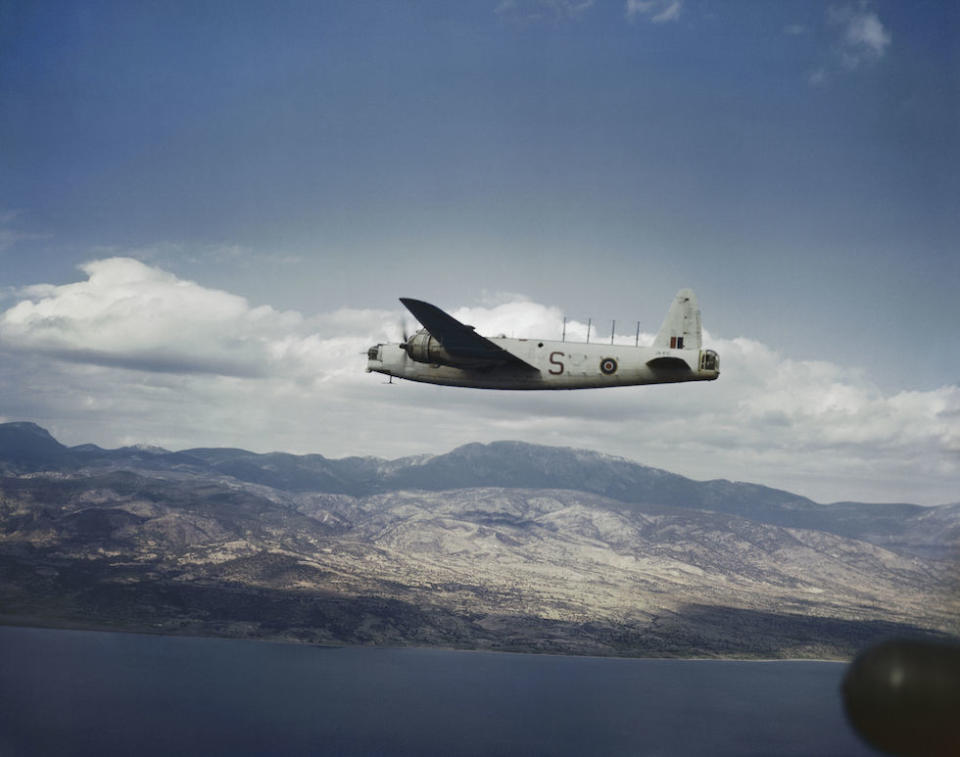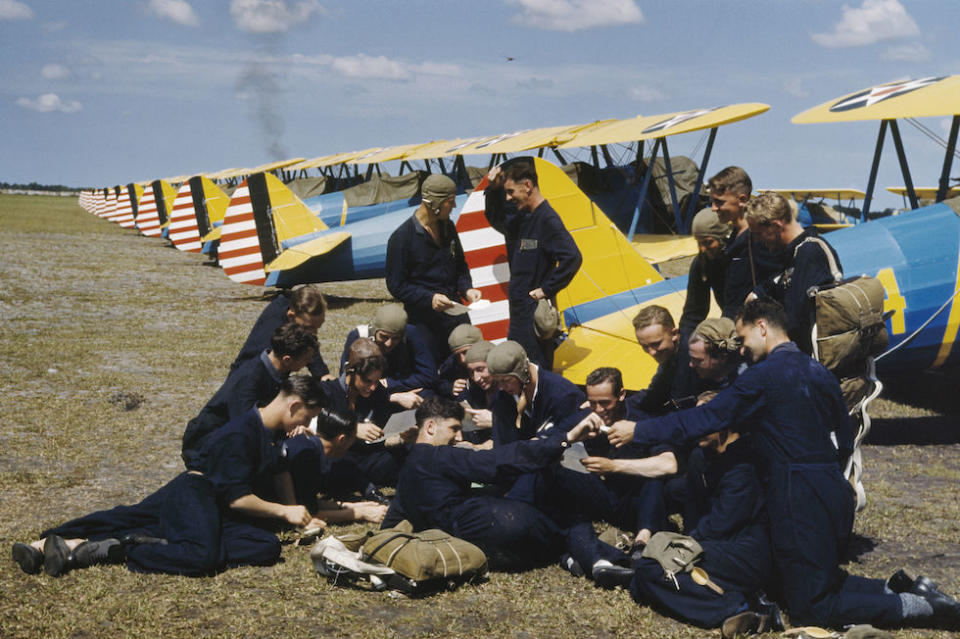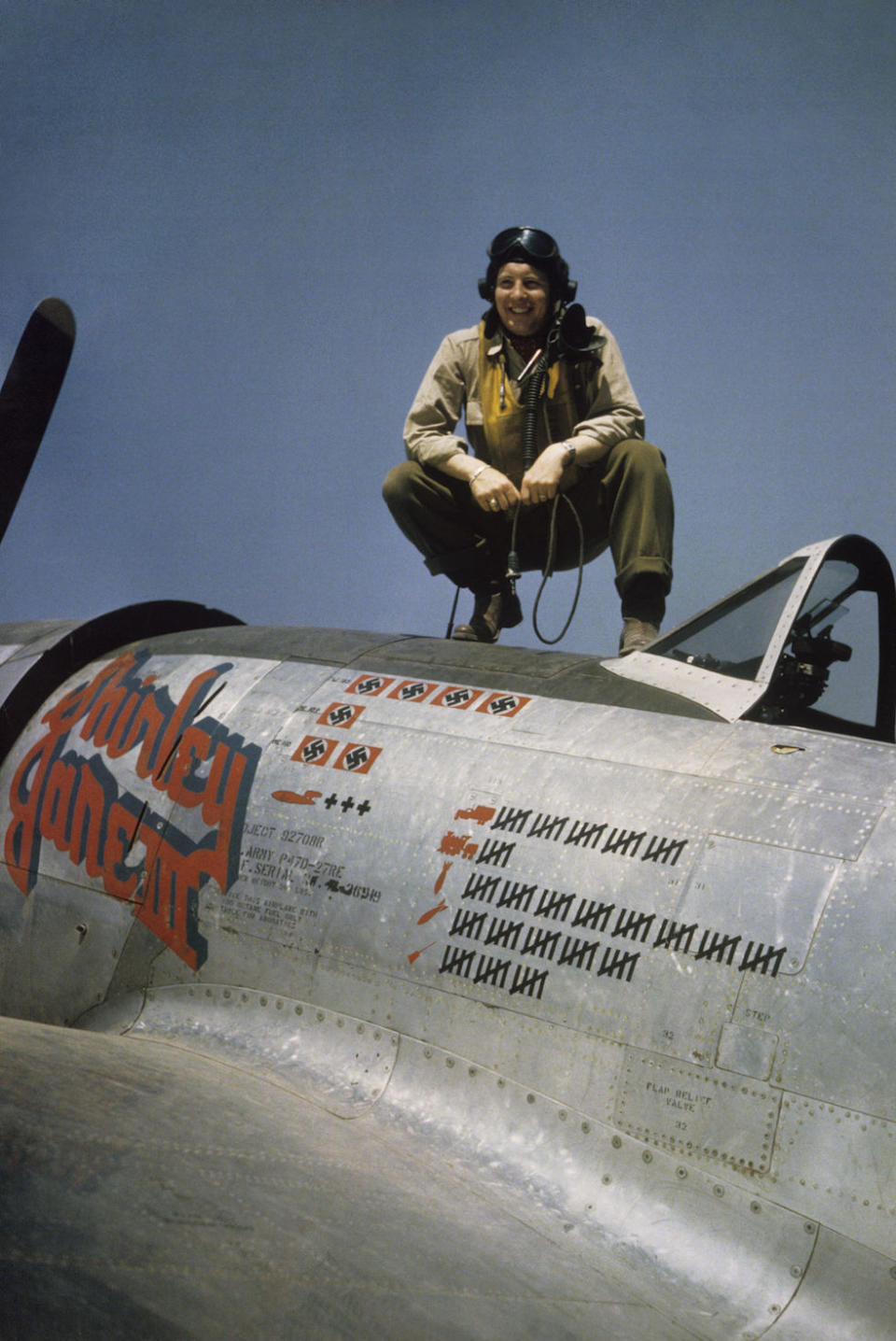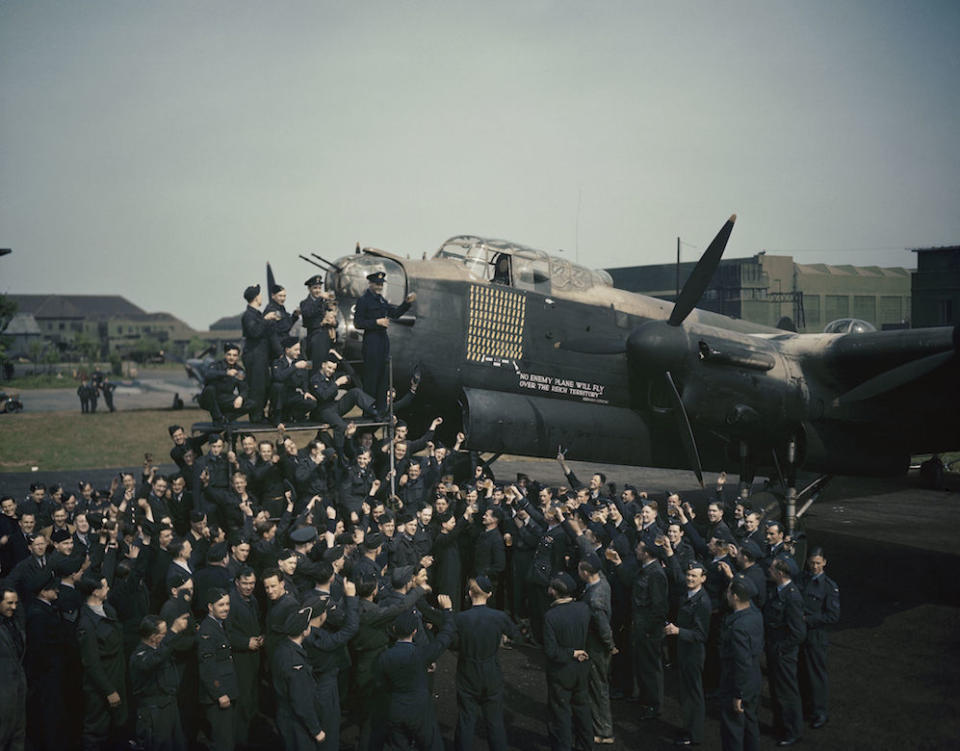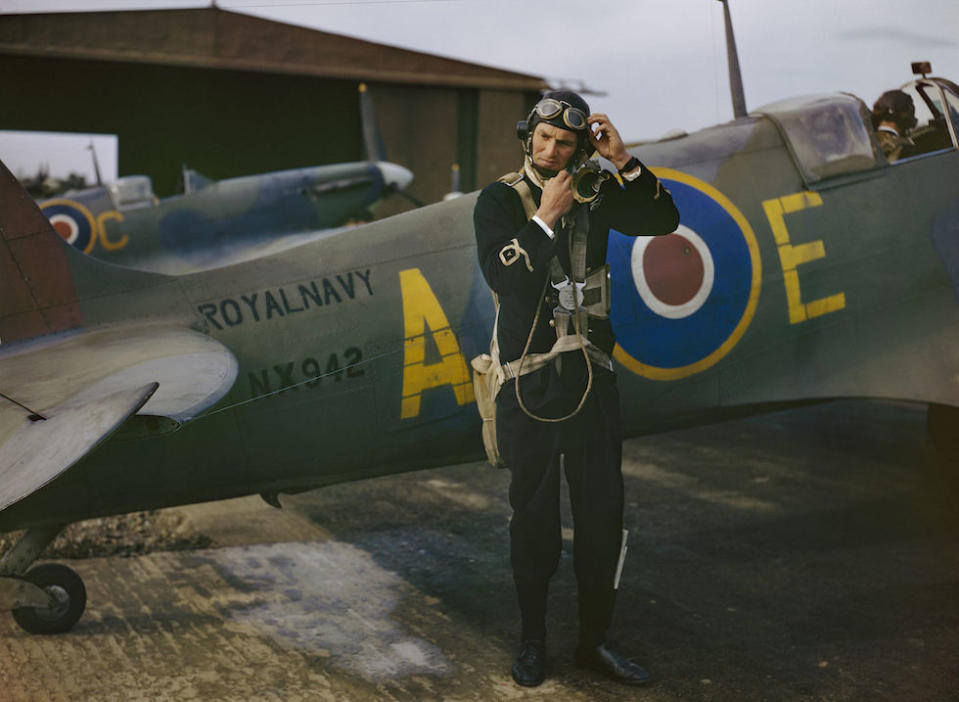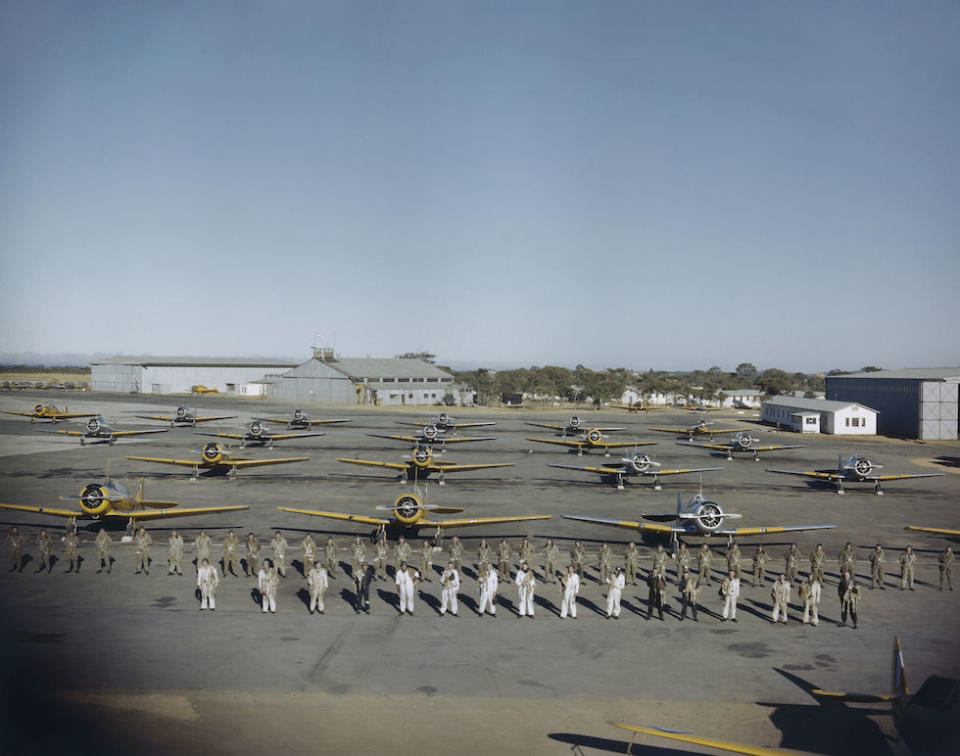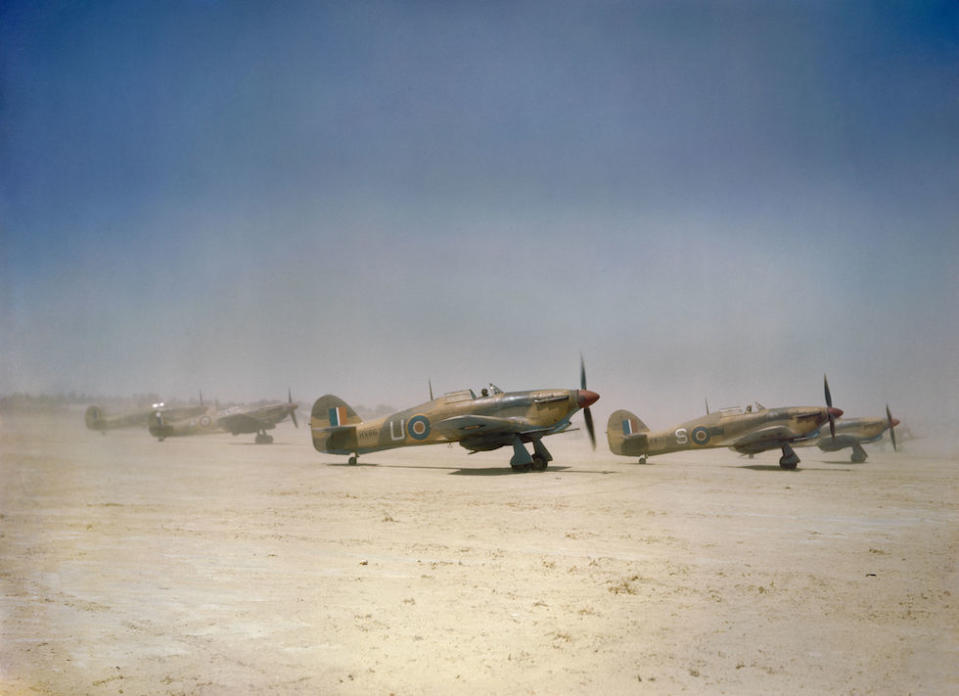In pictures: World World II aerial battles revealed in rare colour photographs
A collection of rare colour photographs is bringing to life the key role that aerial battles played in the Second World War.
A new book from the Imperial War Museums (IWM) showcases original colour images of aircraft and aircrew who were part of the Allied air power that was significant in defeating enemy forces and protecting home territory.
War in the Air: The Second World War in Colour includes images of planes and the lives of people who flew them – from night bombing raids over Germany to protecting Britain, desert warfare, training and squadron celebrations.
Colour photography was extremely rare at the time, and the images – all of which are sourced from the IWM’s collections – have been carefully restored by the museums’ experts.
MORE: Cabinet trio warn they will help delay Brexit rather than leave Europe with no deal
MORE: Traveller duo who led 30 caravans on £300,000 brewery wrecking spree are jailed
They are grouped into themes such as “fighter boys”, “Mediterranean air war” and “training and transport” to illustrate the range of British, Commonwealth and US air force operations in Europe and the Mediterranean.
The new volume follows The Second World War in Colour, published by the IWM in 2017, which brought to life a range of aspects of the conflict with colour images from the archives.
Ian Carter, author of War in the Air and senior curator at IWM, said: “Colour photography was a rarity during the Second World War; film was scarcely available and images were expensive to print.
“The subjects covered in this book are presented in a vivid clarity not typically associated with imagery of the war.
“Each photograph has been carefully optimised by IWM’s team of expert restorers to bring back colour accuracy and detail which over the years have faded from both paper and memory.”
Surviving photographs from the very small amount of material taken by official photographers during the Second World War were passed to IWM for preservation in 1949, where they form part of an archive of 11 million images of conflict from the First World War to the present day.

 Yahoo News
Yahoo News 
